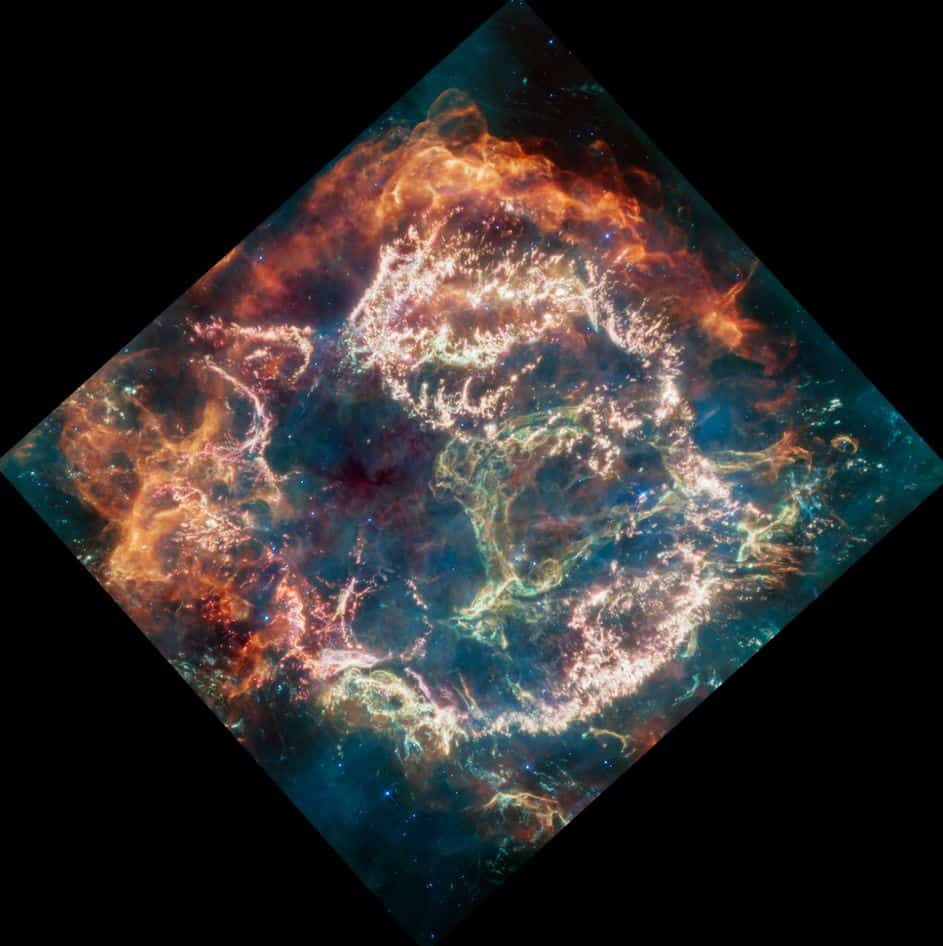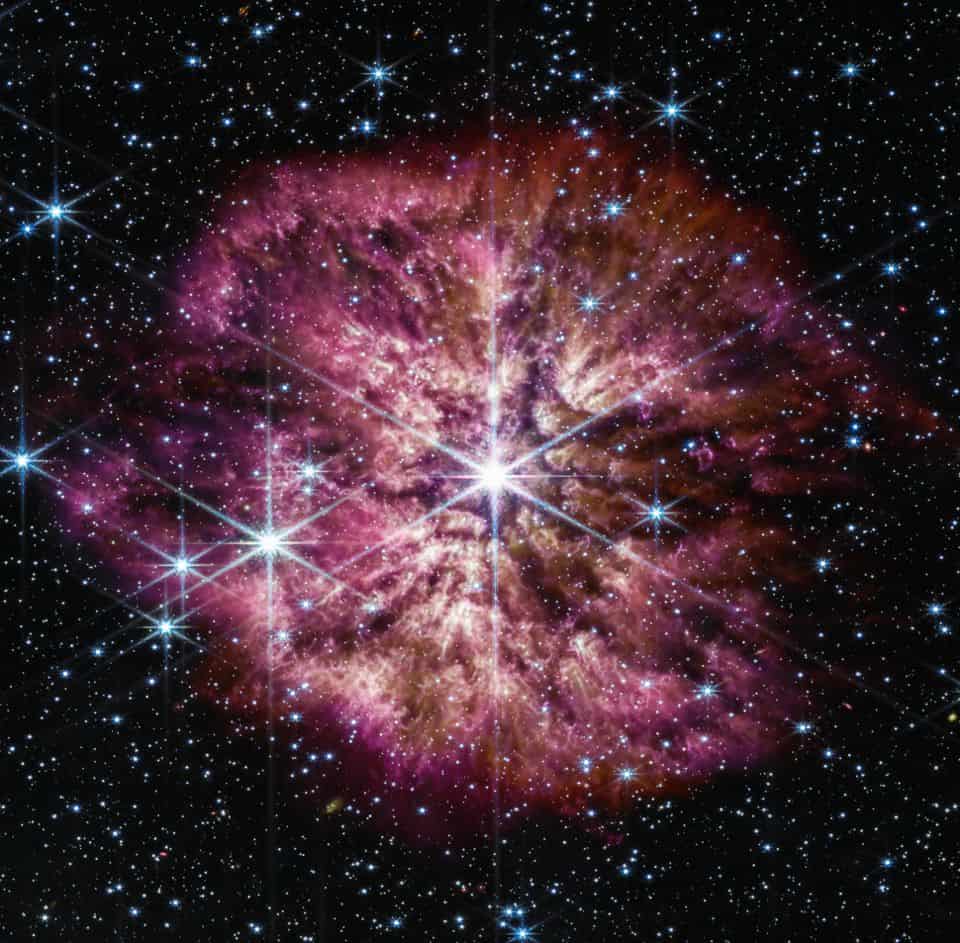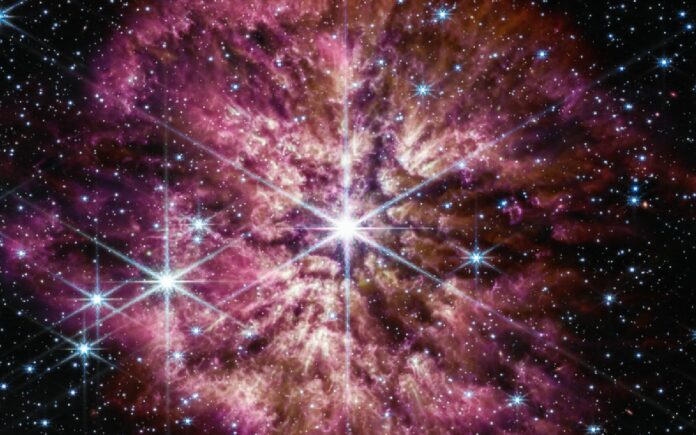James Webb Space Telescope Peers into the Heart of a Stellar Explosion
NASA’s James Webb Space Telescope has captured a stunning mid-infrared image of the supernova remnant Cassiopeia A (Cas A), which was created by a massive star’s explosion 340 years ago from Earth’s perspective.
This is the youngest known remnant from an exploding star in our galaxy, making it a unique opportunity for scientists to learn more about how such supernovae occur. Cas A offers a chance to run a “stellar autopsy” to understand what type of star was there before it exploded and how the explosion happened.
The new image provides incredible detail that was not previously accessible, according to Danny Milisavljevic of Purdue University, the principal investigator of the Webb program that captured these observations.
“Cas A represents our best opportunity to look at the debris field of an exploded star and run a kind of stellar autopsy to understand what type of star was there beforehand and how that star exploded,” he said.
Co-investigator Tea Temim of Princeton University added that the new image provides a more comprehensive understanding of the remnant by combining multi-wavelength observations from ground-based and space-based observatories, including NASA’s Chandra X-ray Observatory.

Cas A is a prototypical supernova remnant that has been widely studied, and the new image adds to the wealth of knowledge already gained about the remnant.
The new Cas A image, which translates infrared light into visible-light wavelengths, displays striking colors that hold a wealth of scientific information that the team is still uncovering. The exterior of the bubble showcases orange and red curtains of material, resulting from warm dust emission, where ejected material from the exploded star is colliding with surrounding circumstellar gas and dust.
Mottled filaments of bright pink with clumps and knots can be seen inside the outer shell, representing the star’s material shining due to various heavy elements like oxygen, argon, neon, and dust emission. Co-investigator Ilse De Looze of Ghent University in Belgium noted that the team is still trying to disentangle all the sources of emission.
The image also reveals fainter wisps of stellar material near the cavity’s interior. However, the most prominent feature is a loop in green that stretches across the right side of the central cavity. The team has nicknamed it the “Green Monster” after Fenway Park in Boston. This loop is pockmarked with mini-bubbles, which add to the shape’s complexity and unexpected nature, making it a challenge to understand, according to principal investigator Danny Milisavljevic.

One of the scientific questions that Cas A may help answer is the origin of cosmic dust. Observations have shown that even very young galaxies in the early universe contain massive amounts of dust. It’s challenging to explain the source of this dust without invoking supernovae, which release large quantities of heavy elements that form the building blocks of dust into space.
However, previous observations of supernovae have failed to fully explain the quantity of dust found in early galaxies. By studying Cas A with the Webb telescope, astronomers aim to understand its dust content and gain insights into the origins of the building blocks of planets and life itself.
Tea Temim of Princeton University explained, “In Cas A, we can spatially resolve regions that have different gas compositions and look at what types of dust were formed in those regions.”
Supernovae, like the one that created Cas A, are critical for the existence of life. They spread elements like calcium, which we find in our bones, and iron, which is in our blood, throughout interstellar space, laying the groundwork for new generations of stars and planets.
Milisavljevic added, “By understanding the process of exploding stars, we’re reading our own origin story.
I’m going to spend the rest of my career trying to understand what’s in this data set.”
The Cas A remnant is located 11,000 light-years away in the constellation Cassiopeia and spans about 10 light-years.
Image Credit: NASA
